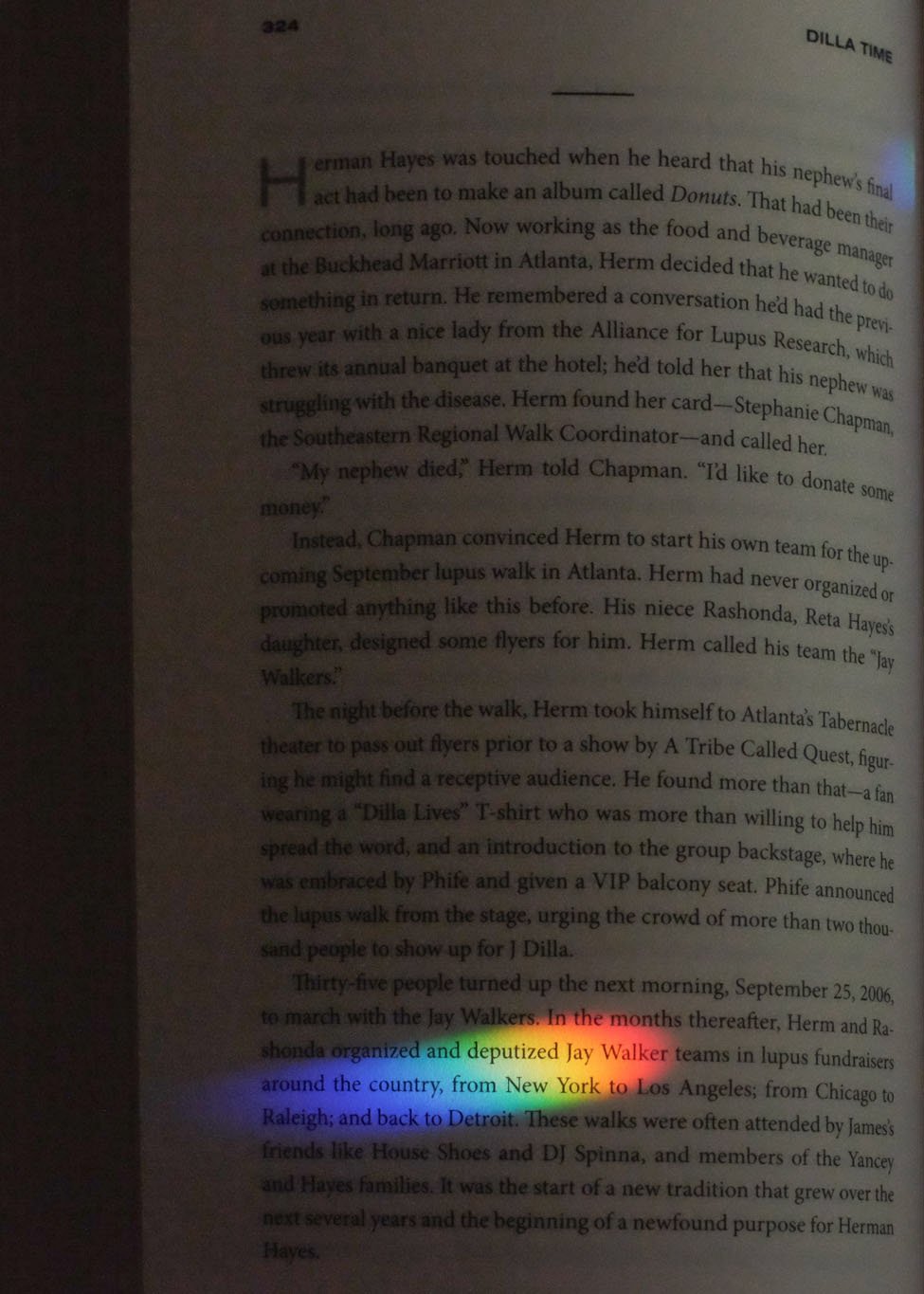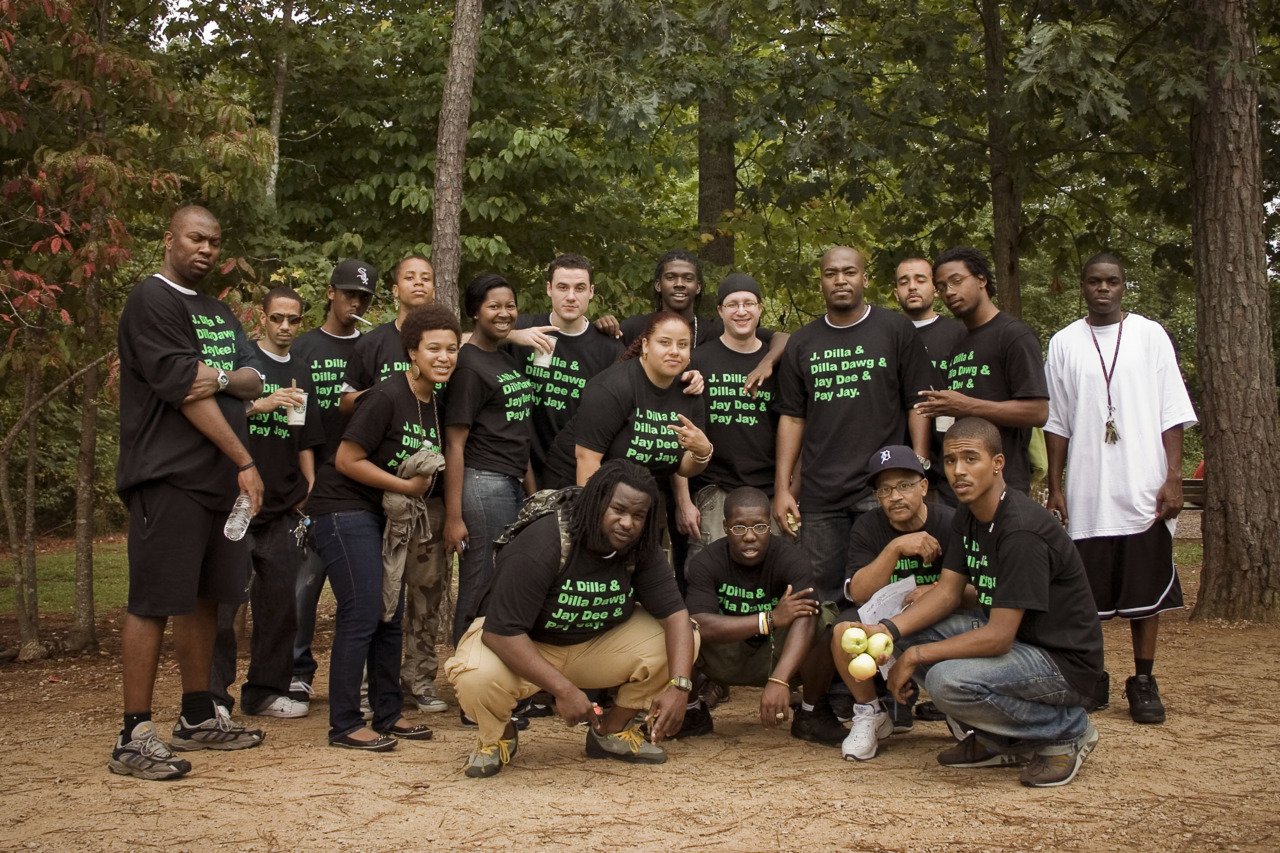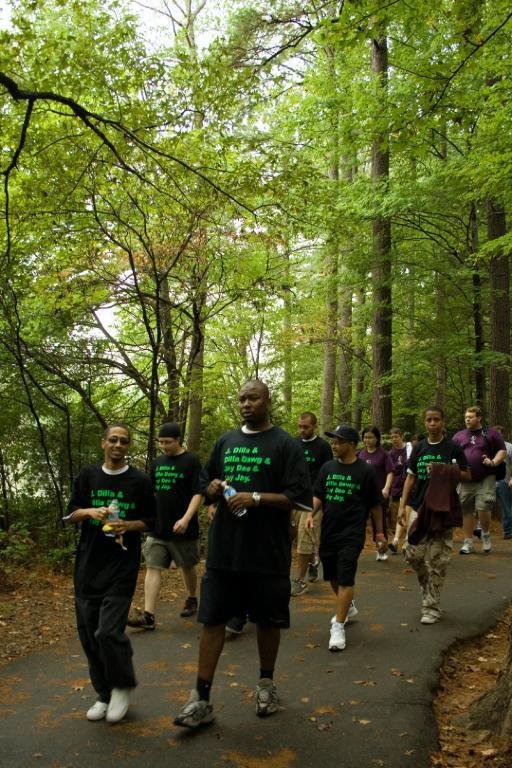8 Impactful Books for My Design Process in '22: Round 2
Picking up from where Round 1 left off, here’s a look at the final four books featured in my ‘22 list which have greatly impacted my personal growth & creative process.
The Tao of Wu, by The RZA & Chris Norris
Born in Brownsville, and growing up much of his life on the streets of Staten Island, a seven year old Bobby Diggs first received the call to pursue a life expressed through the art of rhyme. It was after witnessing a block party taking place in the mid-70s which featured DJs and MCs who were performing a new style of music which would later become known as hip-hop. At an earlier age, while under the guidance of his Uncle Hollis in North Carolina, he was encourage to read poetry and other books on science and religion, which would lay a strong foundation from which his thirst for knowledge would grow. As he grew older and became exposed to greater truths imbedded within things like martial arts, the moves of chess, the Twelve Jewels and the divine messages that flow through all things, he would use his music to impart the wisdom he had gained. Though he knew much of The Way as he had understood it through the texts of the spiritual books, he would veer off course and endure many hardships, including imprisonment and his dark night of the soul, to then emerge as the RZA as we know him today. Standing for Ruler-Knowledge/Wisdom/ Under-standing-Allah, or Rakeem-Zig-Zag-Zig-Allah, the RZA-rector identified what he needed to change in order to bring himself back to life and answer his true calling.
Hearing the sounds of the Wu-Tang Clan as a young kid in the 90’s was a paradigm shifting experience for so many. By this time I was already growing tired with what music was being spoon-fed to the average listener through most radio stations, so hearing the eclectic samples that RZA wove into his productions, along with the quilt-work of styles and unmatched lyricism within the monstrous Wu-Tang crew greatly expanded my whole worldview of what was possible. While other dynamic crews, like Hieroglyphics, would fill my collection, the solace I found in this music would keep my spirit going through many difficult times. Feeling lost and defeated after missing the cut for the College of Design in my first years as a student at NC State, compounded by health issues which led me to drop most of my classes for medical reasons, I later found a community and a sense of purpose with other hip-hop heads through a series of freestyle battles taking place in the basements of different dorms on campus. I heard Phonte rap for the first time there, while also learning of his group Little Brother (who was releasing their debut album The Listening later that year) along with his crew the Justus League. I remember seeing Tab-One turning heads in a lot of these battles as well.
“Confusion is a gift from God. Those times when you feel most desperate for a solution, sit. Wait. The information will become clear. The confusion is there to guide you. Seek detachment and become the producer of your life.”
“When you are content to be simply yourself and don’t compare or compete, everybody will respect you.” Tao Te Ching v. 8
“If you live through defeat, you’re not defeated. If you are beaten but acquire wisdom, you have won. Lose yourself to improve yourself. Only when we shed all self-definition do we find who we really are.”
Constructing the cover for Kooley High’s Eastern Standard Time in 2010
While taking a break from school, I took a job working at Best Buy to work in the store’s music section. As I searched for roommates in the area, a friend of mine from school named Antoine (who I happened to have done some of my first logo design work for) connected me with Charlie Smarts, whom he had worked with at Foot Action, and thought that we’d make great friends. I later learned that Charlie had just co-founded a student-led club called H2O (standing for ‘hip-hop organization’) with another emcee named Rapsody, who Antoine and I would play basketball with in our freshman year. Charlie happened to be in a live hip-hop band with Tab-One called Inflowential as well, so with all these connections I started feeling like I was on the right path. Charlie, Tab & Rapsody would later form their own group along with producers FFFOOLERY & Sinopsis, and DJ Ill Digitz, who all had met through H2O. FFFOOLERY had also connected with 9th Wonder through an independent study program he was in at State, and under 9th’s encouragement, the group chose the name Kooley High, inspired by the 1975 film (Cooley High).
In these moments it was becoming more apparent that following my calling as an artist led me here to help the group be seen and heard. I decided to reach out to Jeff Jank (Art Director of Stones Throw Records) through Myspace, to see if I could get some tips on designing album art. To my surprise, he got back to me with some great advice on how to get started and what to expect. Through my persistence, and despite a number of setbacks and moments of doubt, I’ve risen up to design for a number of other prestigious clients while continuing my path as an artist. To put it like RZA, as with childbirth, Wisdom often comes with pain, and our mind’s ability to overcome any circumstance should not be underestimated. It’s on us to master our thinking and execute. Truth can be found within us all, like a seed waiting for light to grow –– and the Wisdom we gain is that Light.
Dilla Time, by Dan Charnas
The life of James Dewitt Yancey has had such a profound impact on hip hop and popular music in such unassuming ways. After his untimely death in 2006, he’s recognized today to be one of the most important and influential producers in hip-hop history, having worked with the likes of A Tribe Called Quest, De La Soul, Busta Rhymes, The Roots, Common, and Erykah Badu, just to name a few.
Born to a trained opera singer and a jazz bassist, music had been an integral part of his life from the very start. To read about the way that his father Dewitt would hold him as a newborn and thump a rhythm on his belly like he would pluck his upright bass to get him to stop crying, you can imagine how these bass lines were being programmed into his body as a method for soothing the soul.
I was fascinated by the depth at which author, Dan Charnas, explored and got to the root of how the smooth style of J Dilla’s music came to be. He begins taking the reader on a journey through the history of Detroit’s early city planning, which ultimately resulted in a broken grid system of disjointed streets, and rhythmically compares the flow of movement through the city with the syncopated timing of ragtime and swing jazz. These conditions of the city would influence other innovative expressions of music (i.e. rhythm & blues, soul, funk and techno). Charnas paints the perfect picture of how these factors (along with the evolution of synthesizers and the development of the MPC drum machine) were so foundational in the polyrhythmic beats that J Dilla would find his passion and identity through.
My first time really recognizing Dilla as the prolific producer he was actually came through the release of Common’s Like Water for Chocolate in the spring of 2000. I remember this album specifically as one the first ones that got me intrigued enough to start reading through the liner notes in greater detail. As soon as I started listening to it for the first time, I found myself flipping open the CD booklet with nearly every track to see who had produced it, and I kept on seeing “Produced by The Soulquarian’s Jay Dee for the Ummah” next to each song that was really calling to me. It was after this that I began connecting the dots that he was involved with a lot of my favorite music from ATCQ and De La, to The Roots, and The Pharcyde. The Like Water for Chocolate album in particular has some sentimental memories for me going back to my freshman year at NC State, since I’d often play it in my Discman as I’d take my early morning walks across campus to my Art & Design classes. The way Time Travelin’ would set the tone with the rising sun and then segue into Heat in those wee hours did so much more to wake up my mind and body than coffee ever could.
“James Dewitt Yancey cultivated a new time-feel, a third path of rhythm… It is the deliberate juxtaposition of multiple expressions of straight and swing time simultaneously, a conscious cultivation of rhythmic friction for maximum musicality and maximum surprise. It is conflicted time. It is Dilla Time.”
One Last Donut, painted after Dilla’s passing in 2006
I had been listening to Donuts while getting ready for work the day that Dilla passed away. As part of my morning routine, I’d often check the message boards on Count Bass D’s website, followed by Okayplayer and Stones Throw’s boards, and just as I came across the news, his song Don’t Cry came on. The moment was so surreal, I couldn’t help but break down in tears. It felt as if I had lost one of my own family members. After work I painted the piece above in his memory, which I’d later use for a poster to promote a tribute show that Inflow & Kooley High had organized. Adding the info onto it for the flyer would also be a milestone moment for me as a young designer, being that this was my first time ever using Photoshop. Developing my own style as I learned on my own, just as Dilla had with his first drum machine.
Later in 2007, I was involved in one of the groups of “Jay Walkers” that got together to walk with Dilla’s Uncle Herm & cousin Rashonda in Raleigh to raise money for lupus research. The group consisted of other local hip hop artists & students from 9th Wonder’s hip hop history class at NCCU. We all met up with 9th for lunch afterwards, where I got an opportunity to speak with Uncle Herm a bit more. He described the “vault” of Dilla’s music that his mother Maureen was looking to release in the years that followed.
“The full dimensions of a work, even your own, aren’t always apparent on the first viewing or listening. It takes other people’s reactions for you to see it fully.”
To read such a detailed account regarding the backstory around many of the albums that Dilla worked on adds a whole new layer of appreciation to much of the music I’ve loved for so long. I had no idea that Jeff Jank had such a big roll in piecing together Donuts as its designated editor, for example. I originally had the impression that Dilla had meticulously crafted this album on his MPC from his hospital bed as his magnum opus, but to learn that he was more focused on finishing up The Shining at the time makes the way that the Donuts album came together that much more intriguing. I always had the sense that there was an inherently spiritual quality to the album, and learning more about how it all unfolded, along with the impact it’s had, shows me even more that there’s a divine guidance in it. In many ways it’s like a greater narrative of our own lives. A series of disjointed moments, much like the streets of Detroit, that create our story in ways we couldn’t begin to plan for.
Today many fans from all over make pilgrimages to the Smithsonian’s National Museum of African American History & Culture in Washington, DC to view Dilla’s MPC3000 drum machine. After having the opportunity myself to work with the lead architect of this museum, the late Phil Freelon, it was great to also read in the book how his design leads visitors through the museum. Starting in the basement and spiraling upwards towards the light to ultimately reach the Musical Crossroads exhibit on the top floor, which showcases the MPC among other artifacts that celebrate centuries of Black prominence in American pop culture. I find it interesting that before Phil passed away, he was also working on designs for the Motown Museum’s new expansion, so it’s very cool how that connects back to the D. Straight Loops. In perfect rhythmic timing.
Today, J Dilla’s drum machine can be viewed, among other artifacts celebrating Black prominence in pop culture, in the Smithsonian’s National Museum of African American History & Culture in Washington, D.C. –– pictured here with the museum are lead designer David Adjaye and lead architect Phil Freelon from the book Dream Builder: The Story of Architect Phil Freelon (by Kelly Starling Lyons & illustrated by Laura Freeman)
Eat That Frog, by Brian Tracy
A good friend of mine (coincidently named Brian) first introduced me to Brian Tracy’s work back in 2014. I was living in the Bay Area at the time after driving across the country to help another friend of mine move to San Francisco, and while starting the trip with only $500 in my pocket, I had to figure out how to make things happen fast. For the first few months I’d couchsurf from place to place while looking for work, and would walk the streets with my film cameras, in pursuit of a photo project documenting urban farming organizations. On different occasions I would stay with Brian for a couple days while he and I worked on developing a mobile app that would track the user’s daily progress with juicing, and we’d go over other personal projects. As I worked on different concepts for brand identities and user experience within the app, he’d share different talks on YouTube from great business minds like Brian Tracy, Jim Rohn and David Allen to help me keep a positive mindset while focusing in on setting and achieving goals.
After hitting my low point where I found myself stuck on the other side of the turnstile in the BART station, realizing that I had overdrawn my bank account, Brian helped pay for my fare and I soon made arrangements with my folks back home to sell my car to get out of the hole and give myself more of a financial cushion as I worked to make things happen. Shortly after selling my car, we went to the store so I could get a daily planner, and I started mapping out plans for each day. Another thing that helped me out in this process while being without a phone and computer (as they were both being repaired at the same time) was staying pro-active by walking to the library on a daily basis to fill out job applications and getting in a practice of drawing every day until I found some type of work in a creative field.
Eventually, while walking to a camera shop that I found in Berkeley to develop my rolls of film, I came across a flyer for a fruit harvesting program that seemed to perfectly fall in-line with what I was looking for with my photo project. After reaching out to ask about photographing them, I learned that they were actually looking for a photographer to document multiple planting events they were organizing in public spaces across Oakland, which they offered to cover all my expenses in renting a camera for. Documenting their 100 Fruit Trees for Peace project would also lead to a later gig where I was hired by another urban farmer to photograph an event she was organizing at a street fair, which also helped me learn about a job opening at a screen printing shop in Berkeley. About a week after getting the job at the print shop, another opportunity opened up for me to work on a project with Ogilvy, one of the top creative agencies in the world, designing a logo for one of their clients.
Through persistent planning and effort, along with great faith that things would work out, all the goals I set out to achieve were eventually accomplished. I’ve since come across the book The Accidental Creative: How to Be Brilliant at a Moment's Notice, by Todd Henry that may be better geared towards structuring time for creative professionals such as myself, which I look forward to reading more from and implementing in the year ahead. The nature of this type of work is fast changing, so it’s all about being ready and prepared to hit your groove when the moment comes.
Your Calendar/Planner is Your Map x Adventures in Juicing
“Optimists always seek the valuable lessons in every setback or difficulty. They believe that, ‘difficulties come not to obstruct but to instruct...’ [They] always look for the solution to every problem. Instead of blaming or complaining when things go wrong, they become action oriented. They ask questions like, ‘What’s the solution? What’s the next step?’”
My notes added to the back of my 2014 planner while listening to talks from Jim Rohn & Brian Tracy, along with some early figures for structuring my design rates at the time.
“I realized that we all have this sacred spot within us, and it became my aim to access it. Once you can do that, you become aware of your own light, your own being, your own purpose.”
“Scopin’ my focus away from the bogus, in hopes that I notice the lotus in hand”
–Tab-One, Breathe
“What lies behind us, and what lies before us are but tiny matters compared to what lies within us. And when we bring what lies within us out into the world, miracles happen.”
–Henry Stanley Haskins
“Inhale, now hold.
Mind over matter, it don’t matter what you know.”
The Wim Hof Method, by Wim Hof
When Tab-One first approached me about designing for his album Glory in the Weight, we spoke a lot about the transformative process of persevering through some of our heaviest experiences in life. We also talked a bit about the Wim Hof Method, particularly when Tab shared his song Breathe, which features a clip of Wim getting you primed for one of his exercises. I thought it was perfect then for my partner Liz and I to come across this book at a thrift store while I was working on the artwork for the album, and it’s been one that really speaks to my soul in light of a lot of the experiences I’ve been though. Tab and I would also talk about the power of the mind, and how to reduce stress using a 5-2-8 breathing pattern, which involves breathing in for 5 seconds, holding for 2 seconds, and then exhaling for 8 seconds. This is one of many methods that helps activate your vagus nerve, moving the nervous system from a sympathetic state to a parasympathetic state, essentially from “fight or flight” mode to “rest and recover”, to help you better connect with your body and find the strength that lies deep within you. This type of practice has become somewhat of a necessity for me over the past decade, after realizing that many of the health issues that I was experiencing in college were due to a neck injury that I experienced while pole vaulting in high school. Learning more about the vagus nerve’s connection with the heart, and how it related to other conditions I was dealing with, would eventually lead me to my own path of discovering the innate power that we all have within us to heal.
For Wim Hof, a key component of his method, along with the breathwork and cold exposure, is a committed mindset, and he has the research to back it up. Through numerous ice bath experiments and summiting some of the tallest mountains on the planet in record time (even while wearing nothing but shorts), he has shown that when we are able to surpass our conditioning and tap into the great power that we all hold within us, we gain an ability to overcome any stressful situation and rise beyond our perceived limitations. In his younger years he’d become more aware of the deep connection that we have with nature while riding his bike through different countries and being totally immersed in the elements. At the age of 17 he decided to drop out of school and break away from society by living as a squatter, and even with this new found freedom, it was through his discipline and determination that he found his liberation. He contends that the method brings people back to their own accountability, which leads to taking the power back into our own hands. Going into the cold water acts as the entry point from which you learn the power of the mind over the body. As you go in, the first thing it makes you do is gasp for air like being reborn. As you bring air deeper into your lungs and tissues, your whole body chemistry is able to change as it becomes more invigorated with oxygen. These breathing exercises also help the body generate heat through our intercostal muscles, which also increases our pain tolerance, increasing our ability to withstand the colder temperatures. In many ways it becomes a gateway to self-awareness and inner peace.
In my case, I’ve noticed a huge difference in my mental state and physical well-being as I continue to work on increasing my vagal tone with the cold exposure and breathing exercises. Additionally, having some kind of meditative practice has been helpful as well for handling stressful situations while remaining open to the flow of creative energy. Liz has also introduced me to flower essence therapy, which has supported my emotional health, and has helped enhance my creativity and cognition. This is also one of the reasons I’ve included certain flowers in the stained glass design for Glory in the Weight. I focused specifically on those that help support courage and upliftment to rise above any obstacles that might weigh us down. I’ll be sharing more on this subject in a future blog post about the process designing for the album. Until then, just remember to breathe, and stay determined to be the best version of yourself. All lies within.
A special thanks to Liz for gifting me The Tao of Wu and Dilla Time for my birthday last year. Also for helping me comb through area thrift stores for more great books and encouraging me to blog more about some of my favorite reads.

















